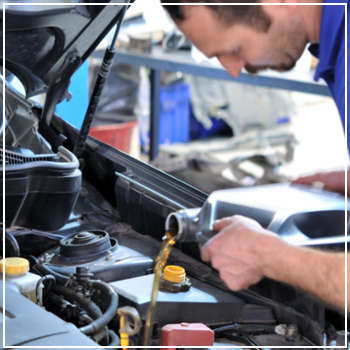Tips for Maintaining Your Car’s Transmission
 When it comes to car maintenance, most people think about oil changes, tire rotations, and air filter checks. But how often do you really consider the health of your transmission? It's easy to overlook, but ignoring it can lead to expensive repairs down the road.
When it comes to car maintenance, most people think about oil changes, tire rotations, and air filter checks. But how often do you really consider the health of your transmission? It's easy to overlook, but ignoring it can lead to expensive repairs down the road.
What happens if you neglect your transmission system? The condition of your transmission directly affects how well your car performs. As your vehicle accumulates mileage, the risk of transmission failure increases significantly. So, what should you be doing to keep it running smoothly?
Understanding the Stress on Your Transmission
Your transmission is under constant pressure from various factors. One of the biggest culprits is heat. You might notice this when your car struggles while climbing a hill. In such cases, manually downshifting can help increase RPMs and reduce strain. If you start experiencing gear slipping or difficulty shifting, it’s time to get your transmission checked by a professional.
Another source of stress is frequent use of the brake pedal, especially in heavy traffic or city driving. To reduce the load on your transmission, try to anticipate stops and slow down gradually. Also, always use the parking brake when parked on an incline or decline. This helps protect the parking linkage and reduces wear over time.
The Importance of Transmission Fluid Maintenance
If you take your car to a reputable auto shop, the technician will likely ask about your transmission fluid. For automatic vehicles, it's generally recommended to change the fluid every 15,000 miles. However, before reaching that point, it’s a good idea to check the fluid yourself.
Look at the transmission dipstick for signs of discoloration—dark or burnt-looking fluid is a red flag. Also, check for any leaks around the transmission pan or lines. If you notice anything unusual, don’t wait; schedule a service appointment right away.
During your visit, you may be asked whether you want a fluid drain or a full flush. Here's the difference:
- Drain and Fill: This is the standard fluid change process. A mechanic will drain the old fluid and replace it with fresh, clean fluid. Over time, sludge and debris can build up, so regular draining helps maintain performance.
- Flush: A transmission flush removes built-up sediment and old fluid from the entire system. Unlike a simple drain, this procedure should only be done every 50,000 to 100,000 miles, as it can be more aggressive and not necessary for routine maintenance.
Maintenance Tips for Manual Transmissions
If you drive a manual transmission, you're in luck—it tends to be simpler to maintain compared to automatic systems. With fewer parts and gears, manual transmissions usually require less frequent repairs. That said, regular maintenance is still essential.
It’s recommended to change the transmission fluid every 15,000 miles or according to your owner’s manual guidelines. Keeping your manual transmission well-maintained can save you money in the long run and ensure smooth, reliable performance.
No matter the type of transmission you have, proper care is key to avoiding costly breakdowns. Whether you need a routine maintenance checkup or a full transmission flush, DaSilva’s Auto Body is here to help. Contact us today to schedule your appointment and keep your car running like new.
Cooling Evaporator
Cooling Evaporator
Xinxiang Yukun Refrigeration Technology Co.Ltd , https://www.yukunevaporator.com
